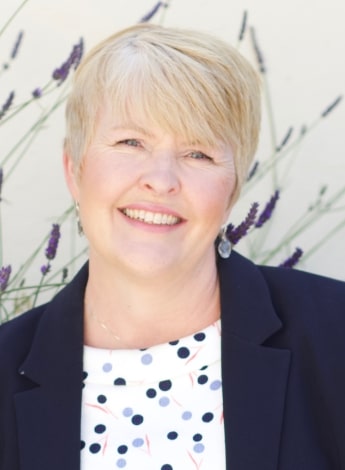
Manual therapy for oncology scars

International presenter Emma Holly explores techniques for treating scarring caused by cancer surgery and radiation in a two-day course.
Tell us a bit about this course.
Cancer surgery and radiotherapy can create different forms of fibrosis and scarring, both superficial and deep, and some patients have ongoing issues linked to scar tissue.
‘RESTORE Oncology Scar Specialist’ is a course for therapists who want to use manual techniques to support recovery and improve tissue health after cancer surgery and treatment create scarring.
Treatment addresses functional issues related to scarring, such as limitations to movement, pain, numbness, thickened areas of scarring, capsular contracture, axillary web syndrome (cording) and other common complications in cancer patients.
Visual improvement in the superficial scar is frequently observed following treatment.
Patients will often also improve emotionally, both through the power of touch and because they are empowered to feel confident about managing their own scar massage.
The two-day course, with an additional online component, goes beyond providing techniques for scar tissue and includes diaphragm assessment and treatment and gentle mobilisations for the ribs.
These are areas that are often affected after cancer surgery on the breast, head, neck, bowel, kidney, lungs and so on. Lymphoedema clients and those with radiation-induced fibrosis in this area should be taught
deep diaphragmatic breathing to support lymphatic flow and to combat stiffness.
What scar therapy techniques will be covered in the course?
The scar massage techniques are divided into pumping, stroking, stretching and fascial release categories.
On intake, the condition and needs of the patient are assessed and techniques are utilised in combinations, depending on the client’s symptoms and presentation on visual and palpable assessment.
The maturity of the scar is also a factor.
Given the growing evidence that skin tension can increase the incidence of problematic scarring—such as keloid, hypertrophic and widespread scarring—techniques to reduce skin tension through the scar would be recommended in treatments for patients with immature scars.

Emma Holly.
How does the course address the treatment of axillary web syndrome in scar therapy?
Axillary web syndrome (cording) is a common complication treated by oncology physiotherapists in a clinical setting.
The ‘RESTORE Oncology Scar Specialist’ course covers techniques for addressing cording in a variety of positions including supine, side-lying and variations with the therapist seated or standing.
There are additional modifications for cording including static patient position, active stretch and passive movement controlled by the therapist.
Lymphoedema is an important consideration, so attendees will learn massage techniques for rib mobility and a technique for diaphragm release to improve breathing patterns.
This helps facilitate healthy lymphatic flow and all the other positive effects that diaphragmatic breathing creates within the body.
What will participants learn about different types of scars and the interventions available for alleviating their associated symptoms?
Different classifications of scar require different treatment considerations, especially keloid and hypertrophic scars. Through the online platform and during the face-to-face days of the course, attendees will learn self-care advice suitable for different scars.
The course allows attendees to observe a range of oncology scars being treated and to learn how the materials can be adapted and applied to many different complications after cancer surgery or radiotherapy, from radical neck dissection to breast reconstruction with capsular contracture.
Can you provide an overview of the treatment planning process discussed in the course?
Attendees are required to create a treatment plan during the in-person part of the course.
A supervised clinic session at the end of the second day provides ‘real’ examples of a patient requiring support and consolidates the practical and theoretical discussions about what to use and why.
Scar massage has been used throughout history, yet clinical research is limited.
While there are links to a number of research papers throughout the theoretical parts of the course, treatment plans should be individualised because there are so many factors influencing the way scar tissue is laid down.
Inflammatory factors, skin condition and comorbidities should always be considered for this complex patient population.
With access to resources for 12 months via the online platform, attendees can review treatment examples, videos and written materials for ongoing support.
‘RESTORE Oncology Scar Specialist’, presented by Emma Holly, will run on 3–4 February 2024 in Nedlands, Western Australia; on 6–7 February 2024 in North Ryde, New South Wales; and on 10–11 February 2024 in Woolloongabba, Queensland.
Click here, here and here for more information and to register.
>> Emma Holly is a manual scar therapy specialist and international speaker from the United Kingdom. In addition to her clinical practices, Emma launched the Restore Therapy training school in 2017 and has trained more than 1000 professionals worldwide on the subject of scars and manual treatment.
© Copyright 2025 by Australian Physiotherapy Association. All rights reserved.





